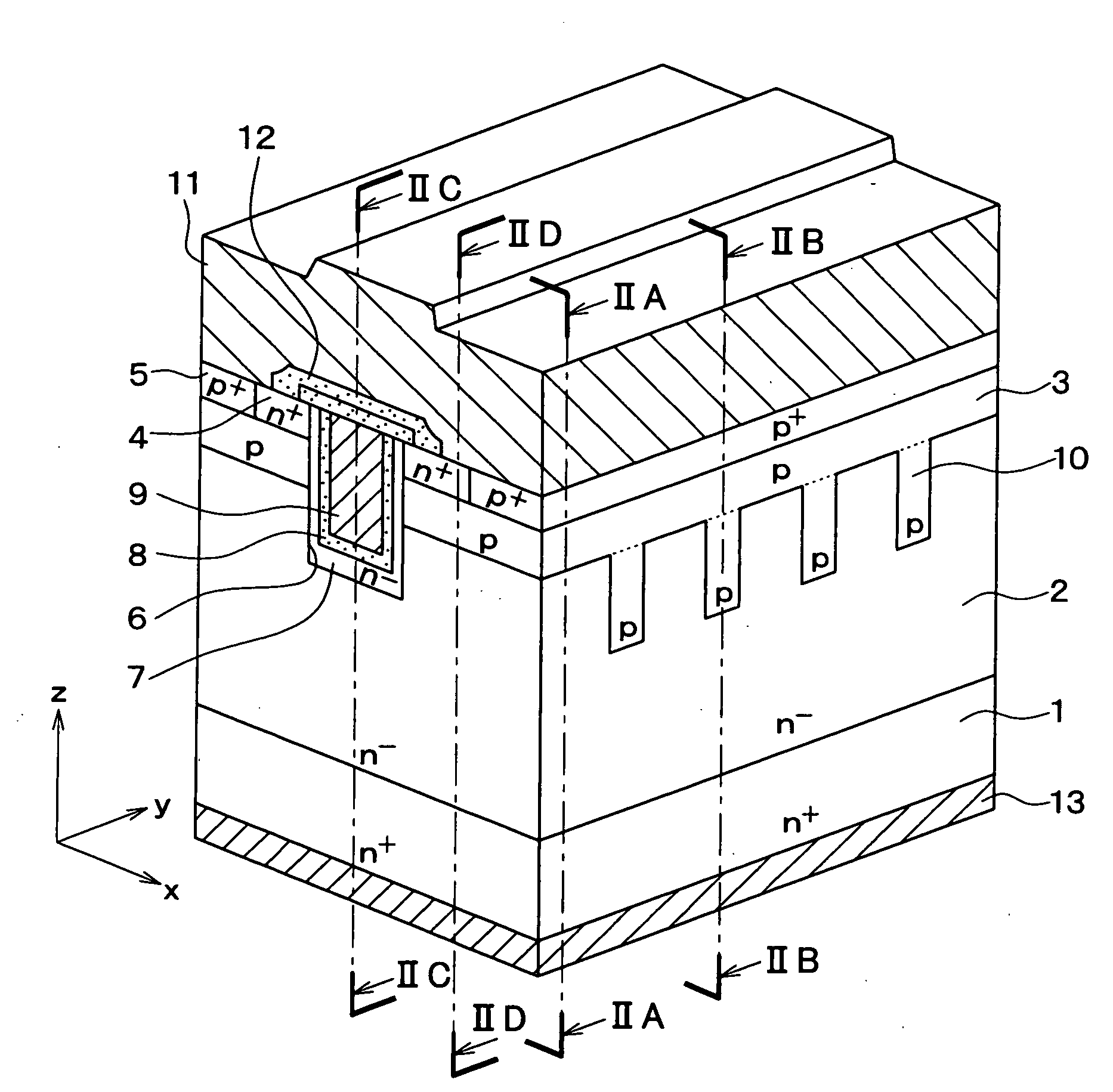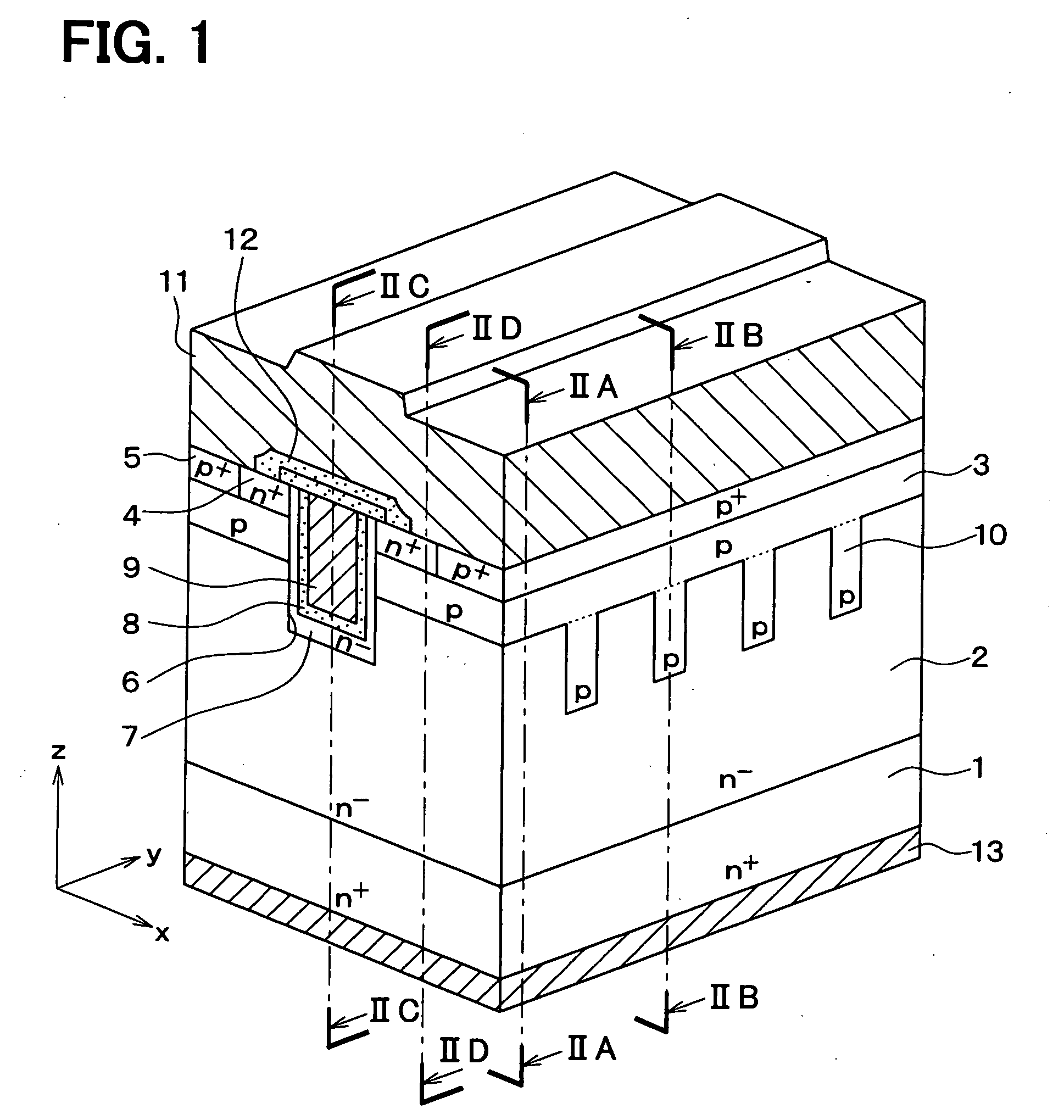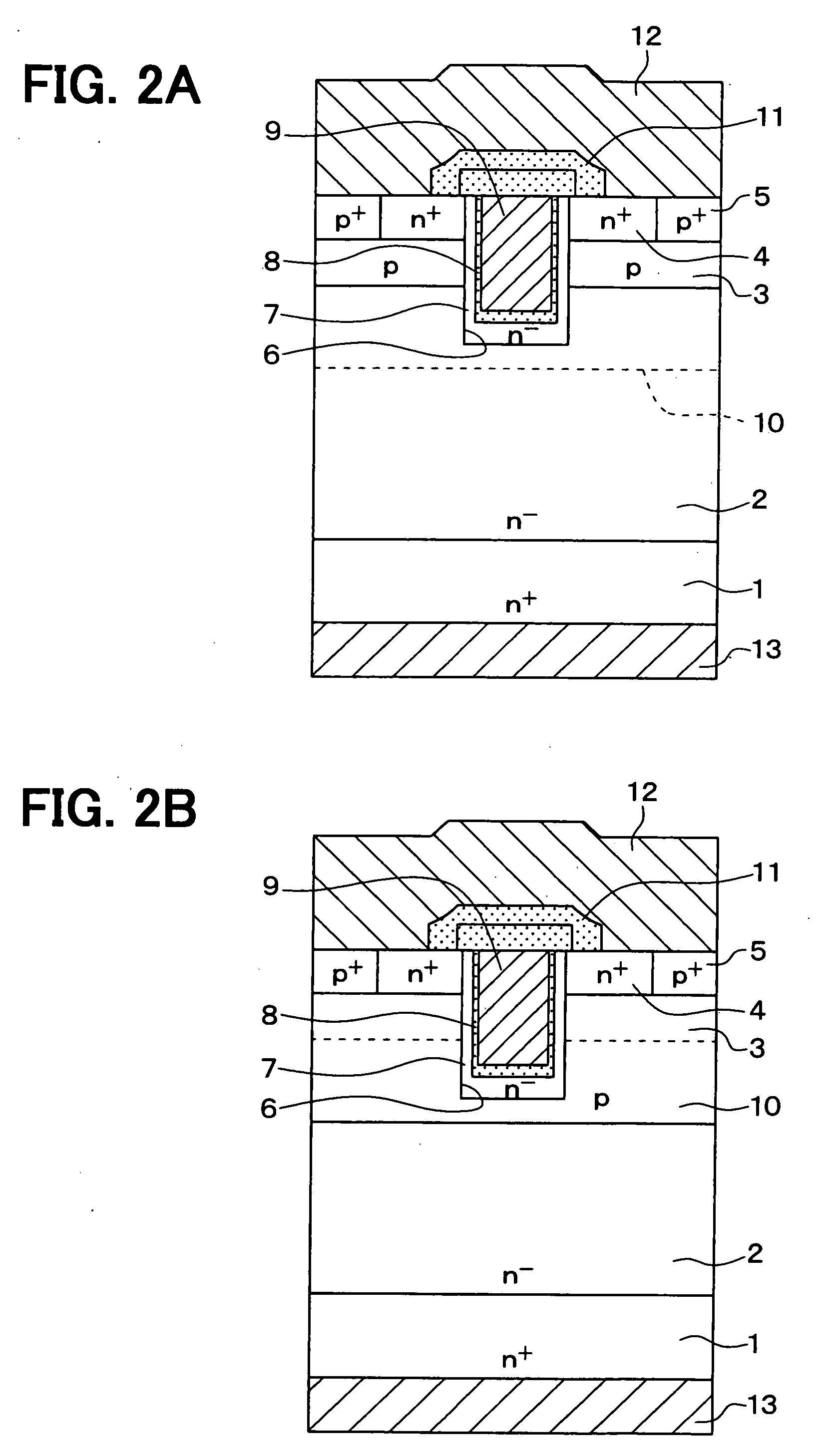Silicon carbide semiconductor device including deep layer
a silicon carbide semiconductor and deep layer technology, applied in semiconductor devices, radiation control devices, electrical devices, etc., can solve the problems of gate insulating layer damage, further relaxation of electric field, and difficulty, and achieve the effect of increasing the breakdown voltage of the sic semiconductor devi
- Summary
- Abstract
- Description
- Claims
- Application Information
AI Technical Summary
Benefits of technology
Problems solved by technology
Method used
Image
Examples
first embodiment
[0090]An SiC semiconductor device according to a first embodiment of the present invention will now be described with reference to FIG. 1 to FIG. 2D. The SiC semiconductor device includes a plurality of accumulation type MOSFETs, for example.
[0091]One of the MOSFETs is illustrated in FIG. 1. In the SiC semiconductor device, the MOSFETs are arranged in a plurality of rows so as to be adjacent to each other.
[0092]The MOSFET includes an N+ type substrate 1 made of SiC. The N+ type substrate 1 includes, for example, phosphorus as N type impurities. An impurity concentration of the N+ type substrate 1 is, for example, about 1.0×1019 cm−3. The N+ type substrate 1 has a thickness of, for example, about 300 μm. On a front surface of the N+ type substrate 1, an N− type drift layer 2 made of SiC is located. The N− type drift layer 2 includes, for example, phosphorus as N type impurities. An impurity concentration of the N− type drift layer 2 is, for example, between about 3.0×1015 cm−3 and ab...
second embodiment
[0120]An SiC semiconductor device according to a second embodiment of the present invention will be described with reference to FIG. 7 to FIG. 8D. As illustrated in FIG. 7, in a MOSFET included in the SiC semiconductor device according to the present embodiment, an N type current diffusion layer 30 is disposed between the N− type drift layer 2 and the P type base region 3 so as to be in contact with the N type channel layer 7. The N type current diffusion layer 30 includes, for example, phosphorous as N type impurities. A concentration of the N type impurities in the N type current diffusion layer 30 is set to be greater than the concentration of the N type impurity in the N− type drift layer 2. The concentration of the N type impurity in the N type current diffusion layer 30 may be greater than the concentration of the N type impurity in the N type channel layer 7. For example, the impurity concentration in the N type current diffusion layer 30 is between about 2.0×1015 cm−3 and ab...
third embodiment
[0123]An SiC semiconductor device according to a third embodiment of the present invention will be described with reference to FIG. 11 to FIG. 12D.
[0124]As illustrated in FIG. 11, in a MOSFET included in the SiC semiconductor device according to the present embodiment, the N type current diffusion layer 30 is disposed between the N− type drift layer 2 and the P type base region 3 so as to be in contact with the N type channel layer 7. The P type deep layers 10 extend from the front surface of the N type current diffusion layer 30. The P type deep layers 10 penetrate through the N type current diffusion layer 30 and are contact with the P type base region 3. For example, the P type deep layers 10 have a depth between about 0.6 μm and about 1.0 μm from the front surface of the N type current diffusion layer 30. An impurity concentration, a width, and an interval of the P type deep layers 10 according to the present embodiment are similar to those of the P type deep layers 10 illustrat...
PUM
 Login to View More
Login to View More Abstract
Description
Claims
Application Information
 Login to View More
Login to View More - Generate Ideas
- Intellectual Property
- Life Sciences
- Materials
- Tech Scout
- Unparalleled Data Quality
- Higher Quality Content
- 60% Fewer Hallucinations
Browse by: Latest US Patents, China's latest patents, Technical Efficacy Thesaurus, Application Domain, Technology Topic, Popular Technical Reports.
© 2025 PatSnap. All rights reserved.Legal|Privacy policy|Modern Slavery Act Transparency Statement|Sitemap|About US| Contact US: help@patsnap.com



